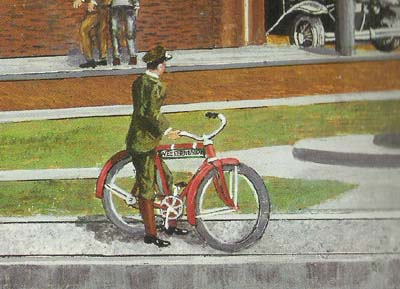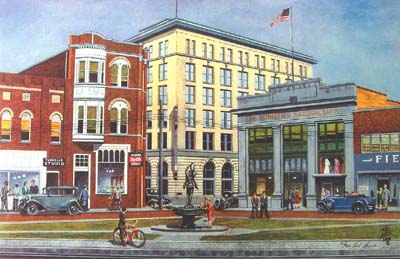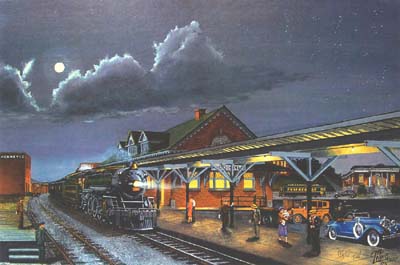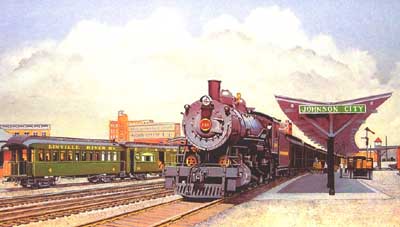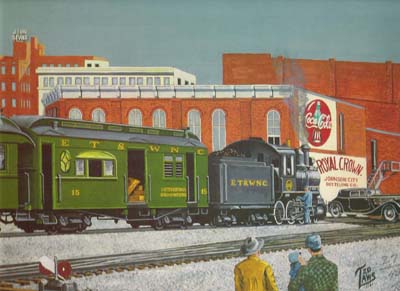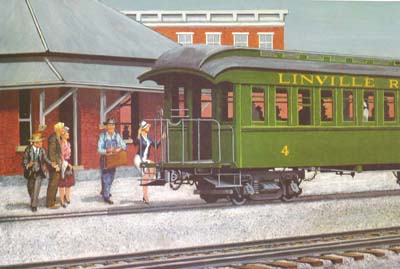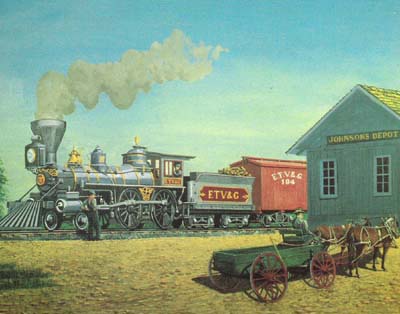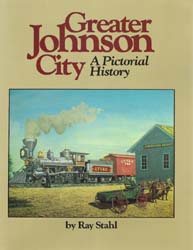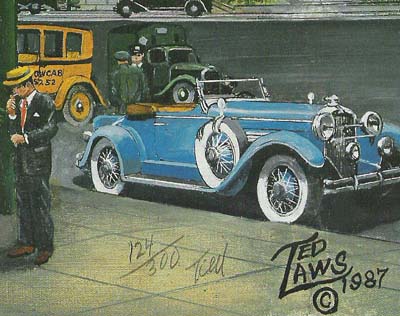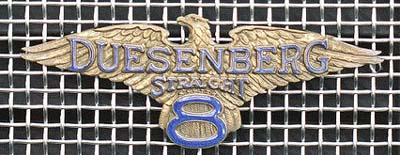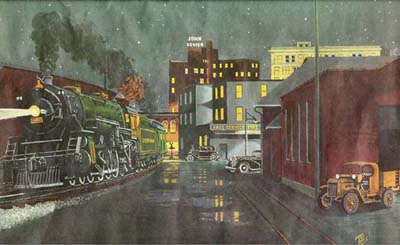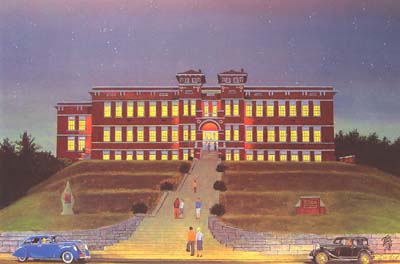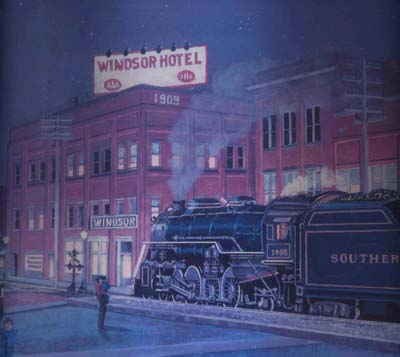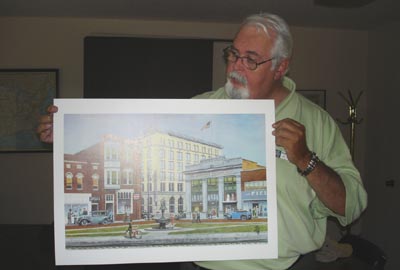Click on each image to see a larger view. |
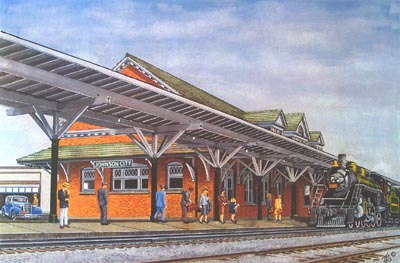
|
| |
|
Date: 1986
|
|
Scene: 1930s |
Ted Laws was born on March 23, 1910. His father was a master carpenter who worked on the construction of the Southern Railway Depot in Johnson City which was completed in 1912. Several of Ted's paintings feature this depot (see above). Ted grew up in the days when time was marked by the arrival of steam engines and the sound of factory whistles indicating shift changes. These were also days when a small boy could roam freely in a city without security fears. Ted's son, Leo, remembers that his dad vividly recalled troop movements from World War I and the constant wartime activity around the rail depots. One thing Ted noted from the famous fountain at Johnson City's Fountain Square as a small boy was how cold the water was. Ted would build family members or even himself into his railway and street scenes. In the painting below which features the Lady of the Fountain statue, the boy on the bicycle in the painting is actually Ted as a teenager. Ted was a "Western Union Boy" in Johnson City at age 14 delivering telegrams to local businesses and citizens. Telegrams reached their peak popularity in the 1920s and 1930s when it was cheaper to send a telegram than place a long distance phone call. People would save money by using the word "stop" instead of periods to end sentences because punctuation was extra while the four character word was free. Ted would have known most of the people and families of the entire city via his courier job for Western Union. Fortunately for Ted, he did not hold this job during the World War I years during which the Western Union courier delivered terrible news to some families of the loss of a father or brother.
|
